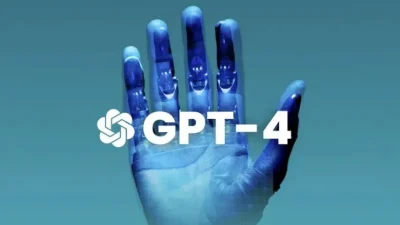Artificial intelligence, including advanced models like GPT-4, offers remarkable opportunities to enhance productivity, creativity, and learning. However, ensuring the protection of your personal and sensitive information while using these tools is paramount. This guide provides practical advice on safeguarding your data, addressing potential risks, and making informed choices when interacting with AI models.
Understanding the Importance of Data Protection
Before delving into specific recommendations, it’s essential to understand why data protection matters. When using AI-powered tools, users may inadvertently share sensitive information, which can lead to privacy breaches, unauthorized data usage, or security vulnerabilities. Protecting your data helps:
- Prevent identity theft. Personal details, if leaked, could be exploited maliciously.
- Maintain professional confidentiality. Sharing work-related information might expose sensitive corporate data.
- Ensure compliance. Certain industries require adherence to strict data protection regulations, such as GDPR or HIPAA.
By being proactive, users can leverage the benefits of GPT-4 while minimizing associated risks.
Best Practices for Safeguarding Your Information
1. Avoid Sharing Sensitive Data
When interacting with GPT-4, avoid including personally identifiable information (PII) or confidential details. Examples include:
- Full names, addresses, and contact information.
- Financial data, such as bank account or credit card numbers.
- Passwords or security codes.
- Proprietary business information.
Instead of providing explicit details, use placeholders or anonymized data to simulate real scenarios.
Types of Sensitive Data to Avoid
| Data Type | Examples | Why Avoid Sharing It |
|---|---|---|
| Personal Information | Name, email, phone number | Prevent identity theft and phishing. |
| Financial Data | Bank details, credit card info | Protect against fraud and misuse. |
| Login Credentials | Passwords, security questions | Safeguard access to accounts. |
| Corporate Data | Trade secrets, client details | Avoid breaches of confidentiality. |
2. Understand the Data Usage Policy
Read and familiarize yourself with the platform’s data usage policy. Key questions to consider include:
- Is your data stored? Understand whether the AI stores interactions or processes them temporarily.
- How is data used? Determine if the data is utilized for training or improvement purposes.
- Can you delete data? Confirm if there are options to erase submitted information.
By knowing how your data is handled, you can better decide what information to share.
3. Use Encryption and Secure Channels
Whenever possible, use encrypted connections when interacting with AI platforms. Encryption ensures that data exchanged between your device and the platform is secure. Look for HTTPS in the website URL and avoid using public or unsecured networks.
4. Implement Two-Factor Authentication (2FA)
If the AI platform supports account-based interactions, enable two-factor authentication. This adds an extra layer of security, requiring you to verify your identity through a second method, such as a text message or authentication app.
5. Regularly Review Account Settings
Periodically review the security settings of your account. Key actions include:
- Updating passwords regularly.
- Reviewing connected devices and sessions.
- Enabling security alerts for suspicious activities.
6. Monitor Permissions and Integrations
If GPT-4 integrates with third-party applications, monitor the permissions granted. Limit access to only what is necessary for functionality, and revoke permissions for unused apps.
Addressing Common Data Security Concerns
Data Retention and Privacy
A frequent concern among users is whether their interactions are retained or stored by the AI provider. Transparency about data retention policies helps build trust. Users should:
- Prefer platforms with clear policies on temporary data processing.
- Seek out options to opt-out of data storage for training purposes.
- Request data deletion, if available.
Avoiding Malware and Phishing
Engaging with AI tools over unverified links or platforms may expose users to phishing attacks or malware. Always:
- Verify the authenticity of the platform.
- Avoid clicking on suspicious links or pop-ups.
- Use antivirus software to detect potential threats.
Educating Yourself and Your Team
For business users, conducting training sessions on secure practices for AI interactions can significantly reduce risks. Employees should:
- Recognize the types of information that should not be shared.
- Understand the company’s data protection policies.
- Report any suspected breaches immediately.
Key Security Measures for Businesses
| Measure | Description | Benefit |
| Employee Training | Educate staff on AI-related risks | Reduces errors and data exposure. |
| Secure Connections | Use VPNs and encrypted channels | Enhances data transmission security. |
| Data Classification Policies | Define what can/cannot be shared | Maintains confidentiality. |
Leveraging Built-In Safeguards
Many AI platforms incorporate safeguards to protect users. Key features include:
- Anonymization. Automatically removing identifiable information from interactions.
- Session Expiry. Limiting the duration of active sessions to prevent unauthorized access.
- Data Masking. Hiding sensitive information in displayed outputs.
Familiarize yourself with these features and use them to your advantage.
Balancing Utility and Security
While it’s important to safeguard your data, excessive restrictions can limit the utility of AI tools. Strive to find a balance by:
- Using generalizations instead of specific details.
- Creating mock scenarios for testing purposes.
- Evaluating the risk level of each interaction.
Conclusion
Protecting your data when using GPT-4 requires a combination of awareness, proactive measures, and leveraging available safeguards. By following these recommendations, users can confidently utilize AI tools while minimizing risks.
Key Takeaways:
- Avoid sharing sensitive personal and financial information.
- Use encrypted channels and secure networks for interactions.
- Familiarize yourself with platform policies and adjust settings accordingly.
- Monitor third-party integrations and account permissions.
- Educate yourself and your team about secure practices.
By prioritizing security, users can unlock the full potential of GPT-4 without compromising their data integrity.






